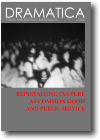HOW DO CULTURAL HOUSES AND CULTURAL HEARTHS MATTER? TOWARDS A NEW IMAGINATION OF THESE INSTITUTIONS
HOW DO CULTURAL HOUSES AND CULTURAL HEARTHS MATTER? TOWARDS A NEW IMAGINATION OF THESE INSTITUTIONS
Author(s): Irina Botea BucanSubject(s): Theatre, Dance, Performing Arts, Architecture, Visual Arts, History of Art
Published by: Studia Universitatis Babes-Bolyai
Keywords: cultural houses; architecture; social imagination; monetization of culture; entanglement;
Summary/Abstract: Whether resembling vacated shells or remaining fully functional, either commercially repurposed or relatively busy with paid or unpaid ‘leisure activities’, cultural houses and cultural hearths are still present throughout Romania, usually in the centre of towns and communes. Designed to centralise cultural and informal educational activities within a socio-geographic area, they enabled regional authorities to both survey the leisure time of the population along with providing a foundation for the production of the ‘new’ multidimensional socialist subject within a collective context. But immediately after 1990 they were seen as either a nuisance or a historic reminder that needed to be turned into an absence, a void: the epic but invisible institution. The article makes a case for why they deserve another chance in a punctual and specific re-evaluation that ultimately desires to insert a number of critical points for a possible re-imagination of these models of organization in which both stable and transitory communities collectively produce what we may call culture. It provides an extended timeline/lineage that opposes one-dimensional readings of the institutions as objects of communist propaganda. It argues that the ways in which they were planned during 1955-1989 counteracts contemporary monetarist visions towards the role of such cultural institutions. Ultimately, cultural houses were part of a national plan that considered culture as central to the ‘common good’ rather than a laissez-faire approach that places economic efficiency above all else. Paradoxically, more contemporary versions of cultural houses and hearths are often far more restrictive than their early predecessors and this situation can and should change.
Journal: Studia Universitatis Babes-Bolyai - Dramatica
- Issue Year: 67/2022
- Issue No: 1
- Page Range: 35-54
- Page Count: 20
- Language: English

